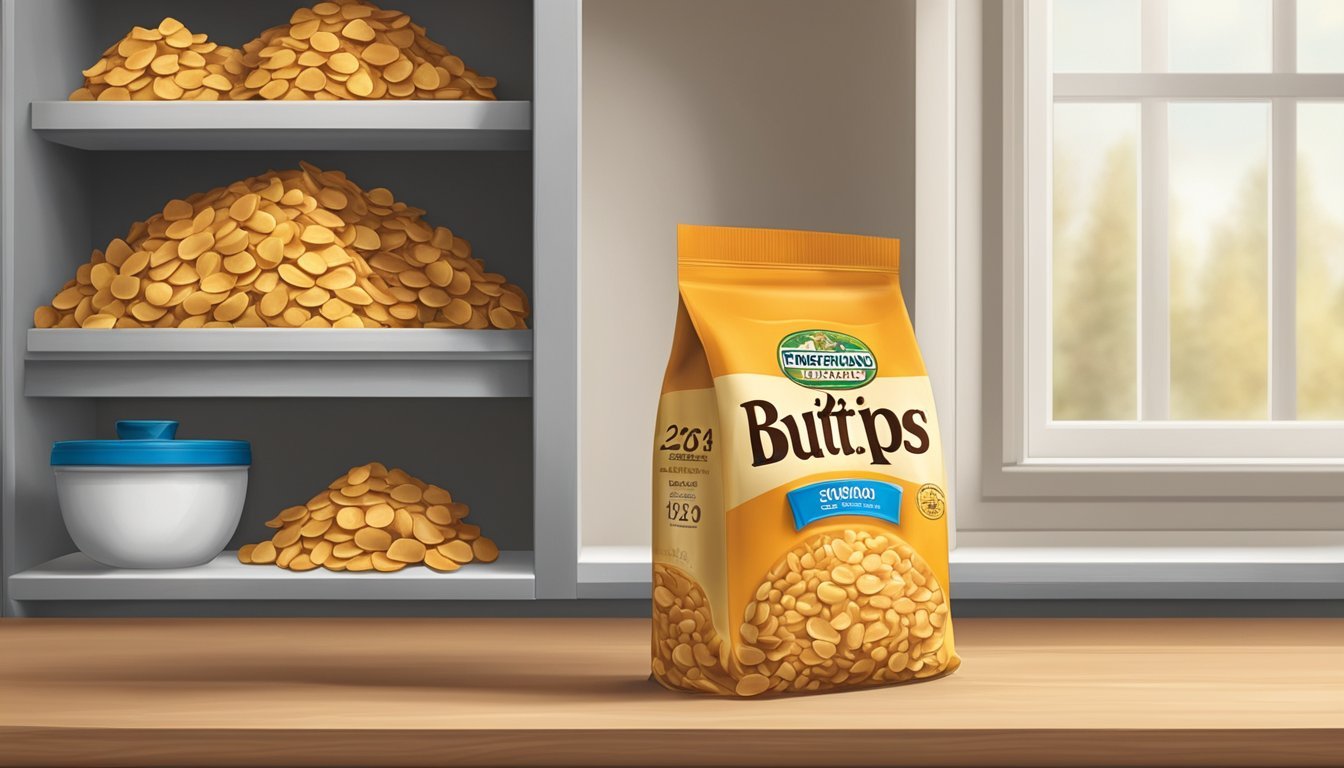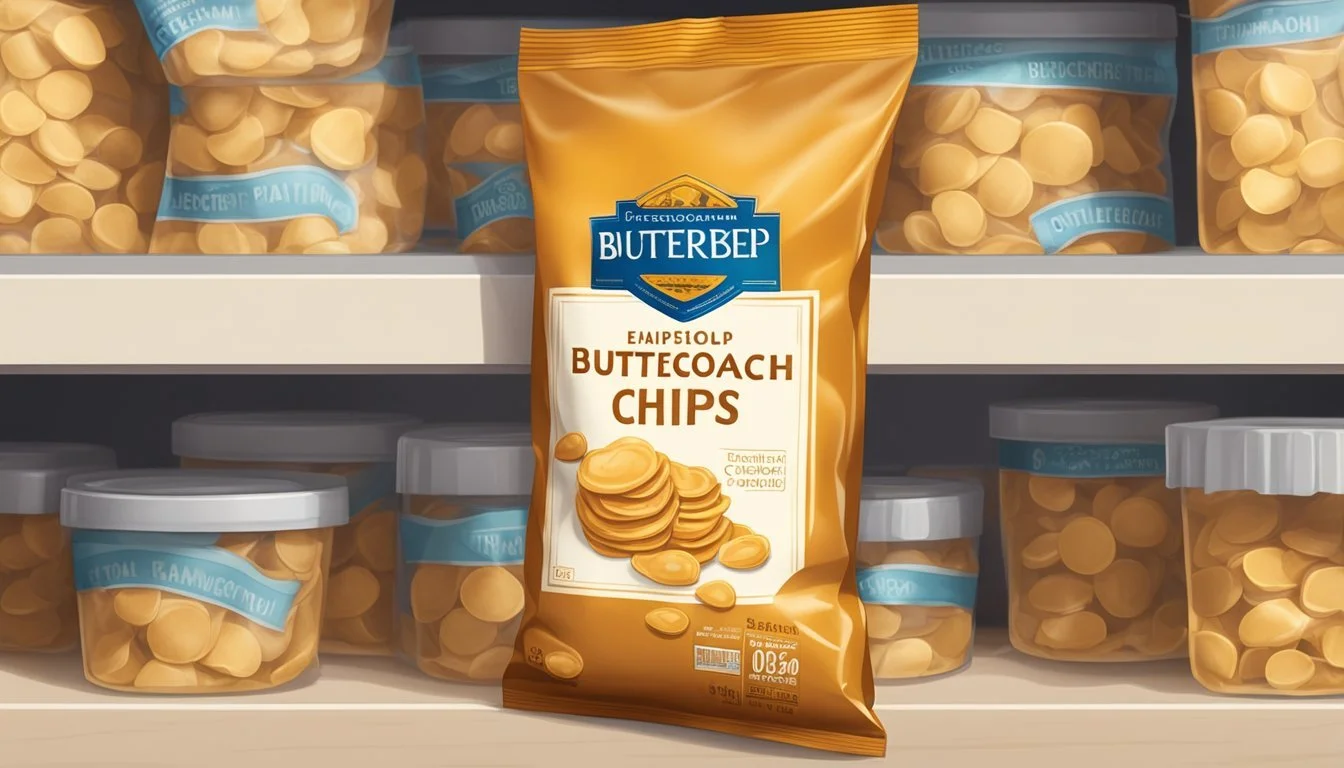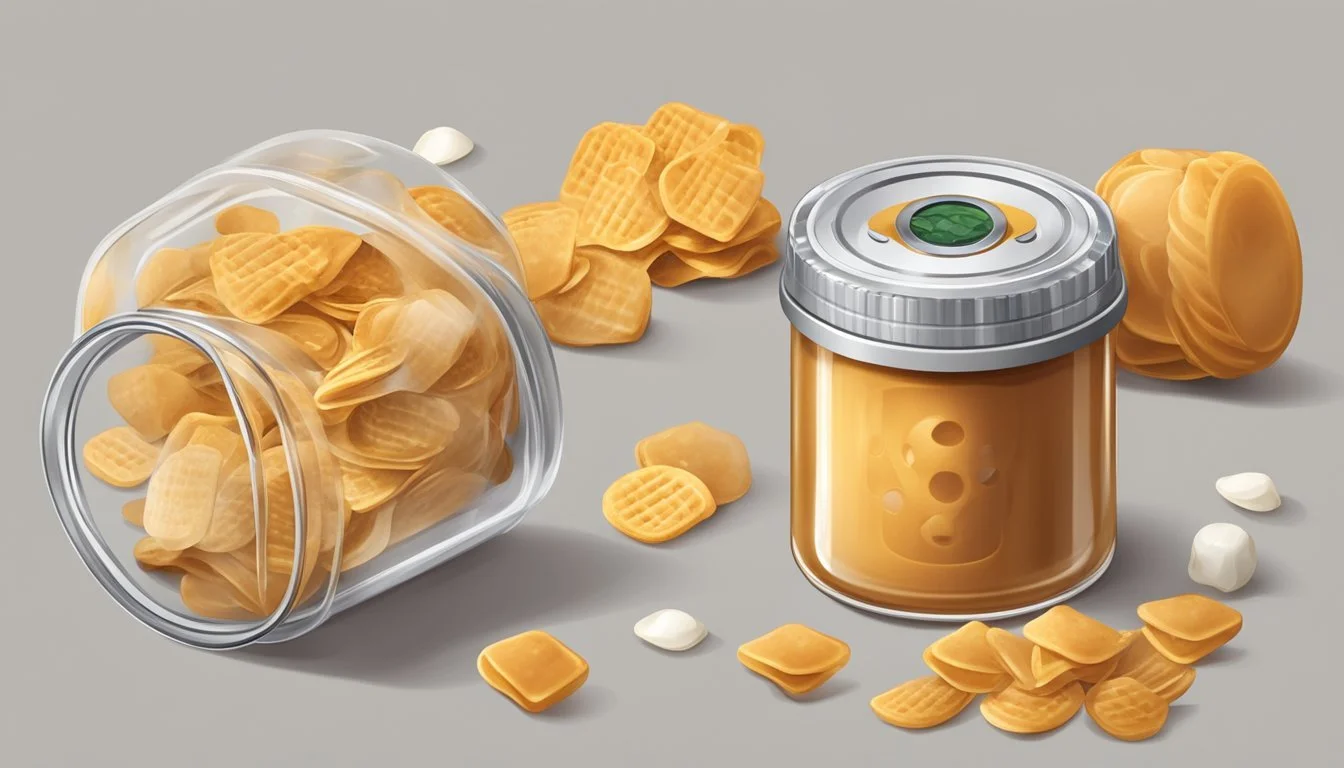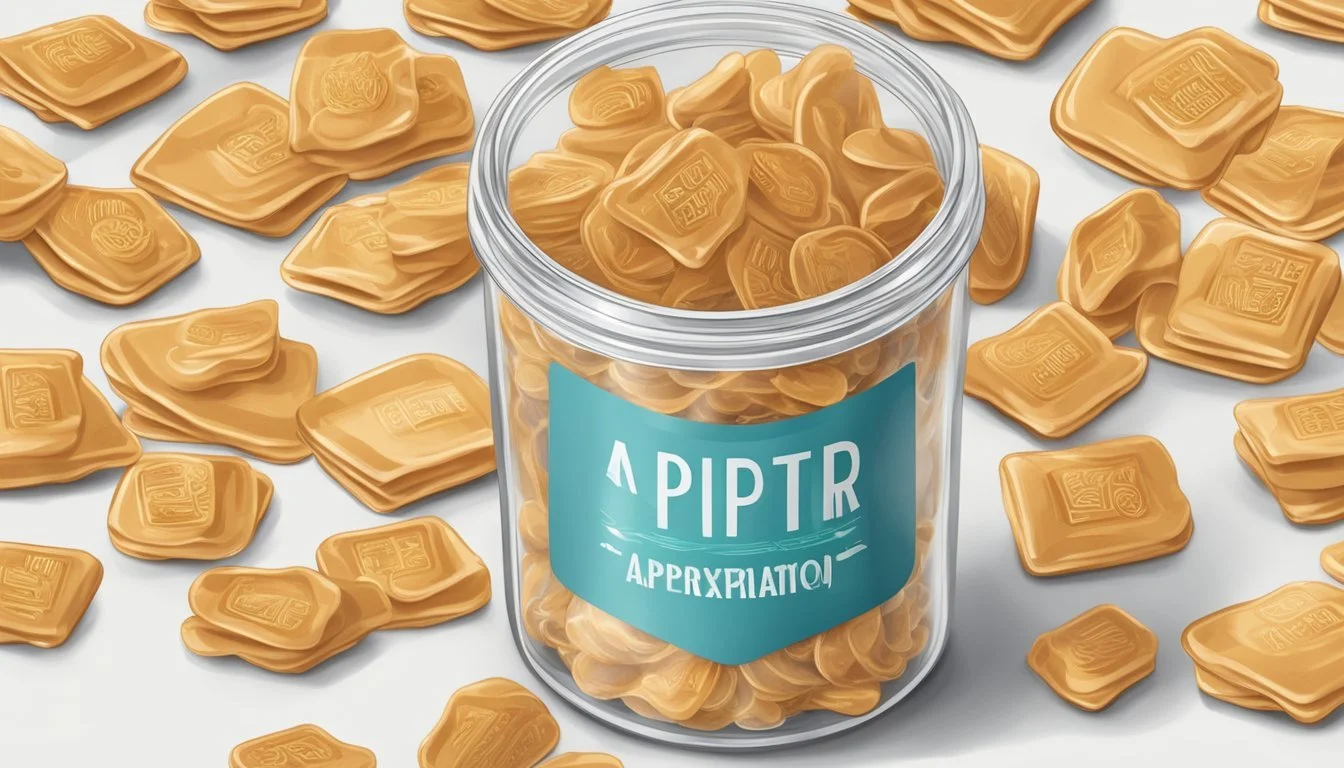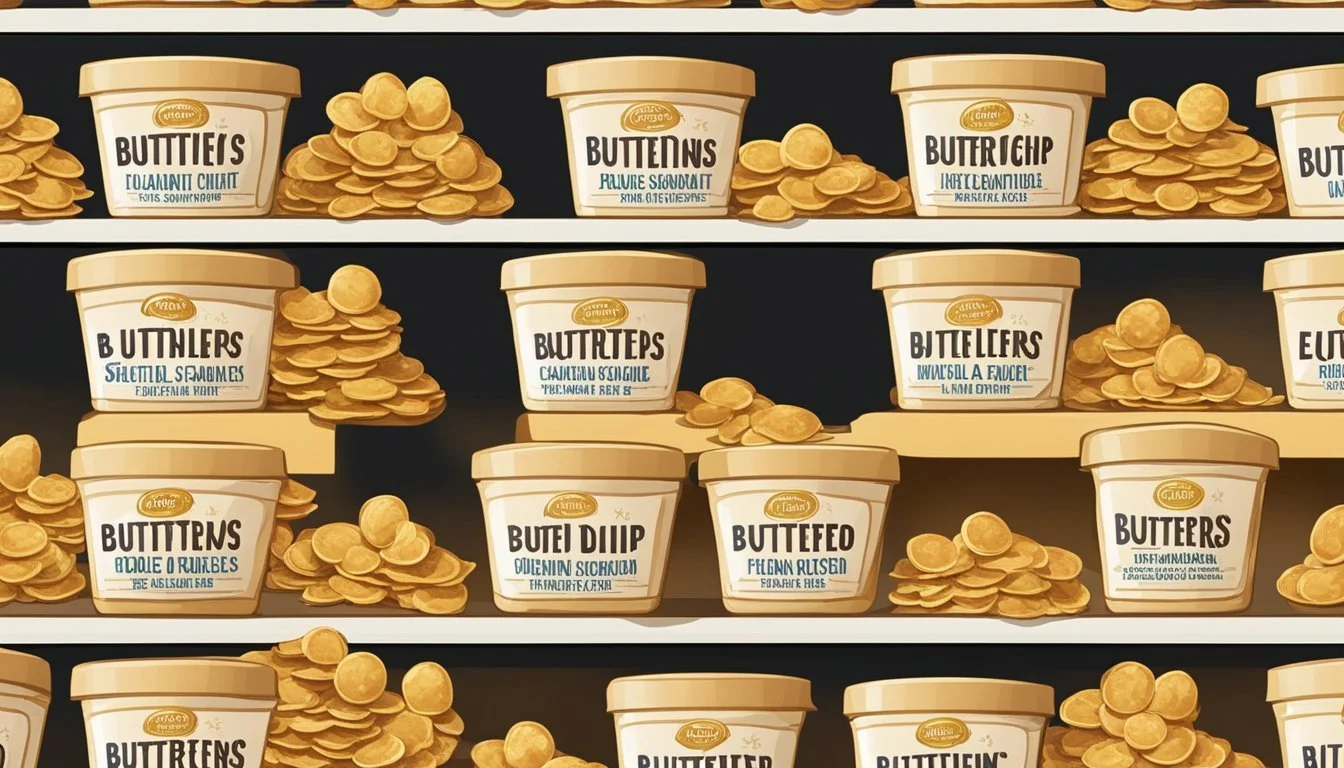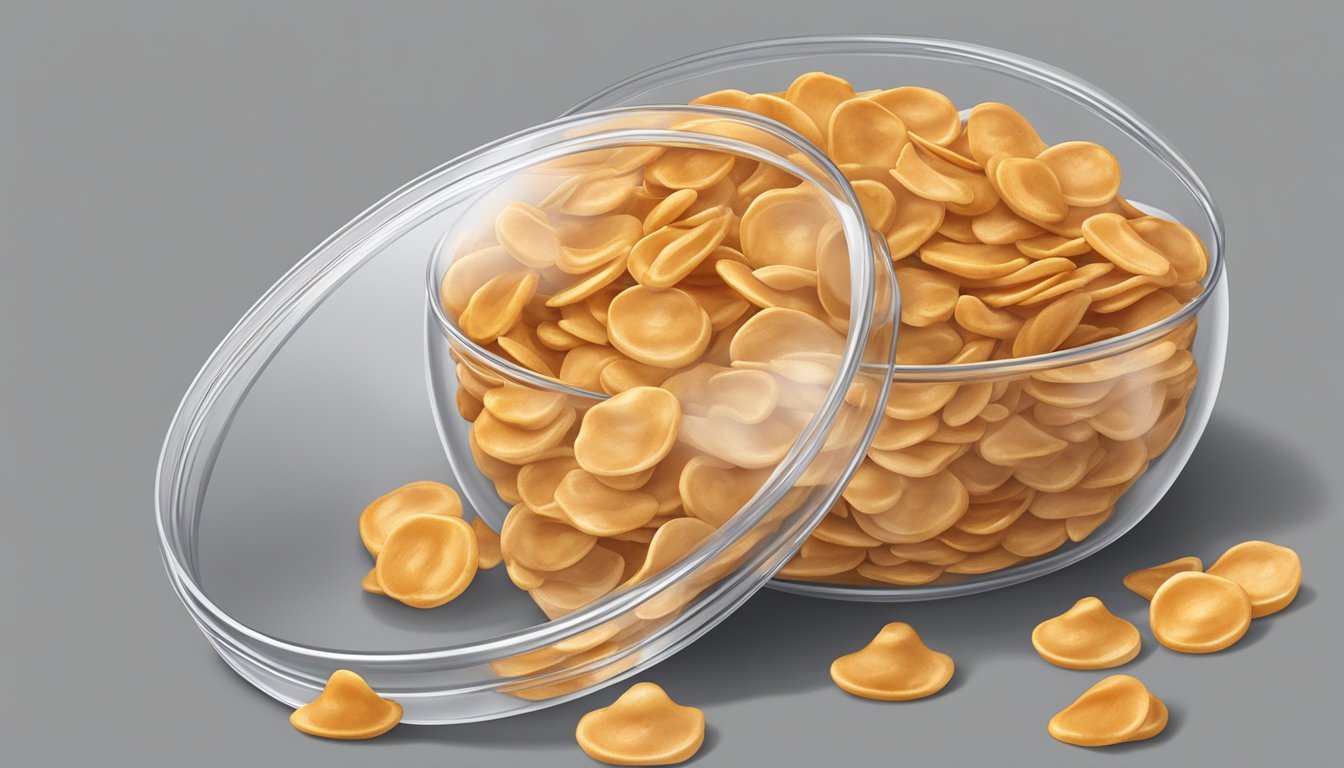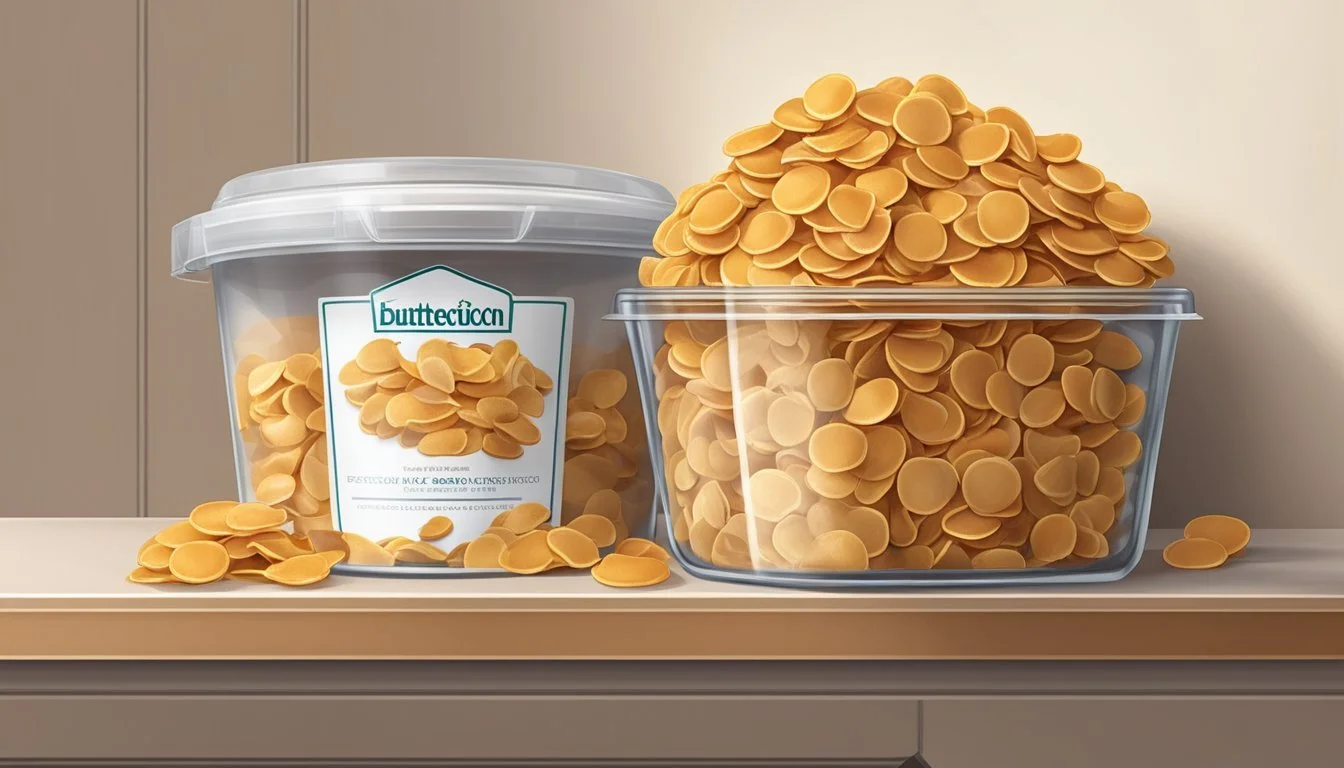How Long Do Butterscotch Chips Last?
Shelf Life and Storage Tips
Butterscotch chips are a popular ingredient found in numerous dessert recipes, ranging from cookies to sauces. Yet, consumers often wonder about the shelf life of this sweet confectionery item. Typically, butterscotch chips have a considerable shelf life, being able to maintain their quality for a lengthy period when stored properly. An important distinction to note is the difference between the expiration date and the peak quality timeframe. The expiration date is generally an indicator of when the butterscotch chips may start to diminish in quality, not necessarily when they become unsafe to consume.
The key to extending the shelf life of butterscotch chips lies in appropriate storage. To ensure that these chips retain their flavor and texture, they should be kept in a cool, dry place, away from any sources of heat or moisture. When stored in a pantry, unopened butterscotch chips can last for years, while opened packages may remain in good condition for subsequent months. Even beyond their expiration date, butterscotch chips are often still safe to consume—although their quality may start to wane, leading to changes in taste or texture over time.
Maintaining the quality of butterscotch chips is tied closely to their storage conditions. It is not necessary to refrigerate butterscotch chips; in fact, fluctuations in temperature, like those in a refrigerator, can cause issues such as sugar bloom, where sugar rises to the surface, resulting in a white, powdery appearance. In an airtight container, butterscotch chips are well-guarded against external odors and humidity, two factors which can significantly hasten the loss of quality. As a result, thorough and correct storage practices are essential for preserving the enticing flavor of butterscotch chips well beyond the date indicated on their packaging.
Understanding Butterscotch Chips
Butterscotch chips are a sweet confectionery ingredient often used in baking and dessert making, rich in flavor and distinct in their golden-brown color.
Composition and Varieties
Butterscotch chips are primarily made up of brown sugar, butter, and a form of leavening. They may also contain variably, corn syrup (how long does corn syrup last?), soy lecithin (as an emulsifier), and vanilla for added flavor. In addition to the classic type, there are several varieties that may include additives such as preservatives or additional flavors.
Common Varieties of Butterscotch Chips:
Classic: Traditional butterscotch flavor.
Salted Caramel: Infused with a hint of salt.
Peanut Butter Flavored: Combines butterscotch and peanut butter (how long does peanut butter last?) flavors.
Comparing Butterscotch to Chocolate
While both butterscotch and chocolate chips (how long do chocolate chips last?) are used as confectionery items in various dessert recipes, they differ in taste, texture, and culinary use.
Flavor:
Butterscotch Chips: They offer a rich, buttery flavor with a sweet and slightly salty taste.
Chocolate Chips: They range from sweet (milk chocolate) to bitter (dark chocolate), depending on the cocoa content.
Texture:
Butterscotch chips tend to melt differently than chocolate chips, usually acquiring a creamier texture.
Chocolate chips, specifically dark chocolate, tend to retain their shape more when melted due to their cocoa butter content.
Culinary Use:
Butterscotch chips are often used in recipes that require a caramelized flavor profile.
Chocolate chips are more versatile, featuring in everything from cookies and cakes to melting for ganache or sauces.
Assessing Quality and Freshness
When evaluating the quality and freshness of butterscotch chips, it is important to look at appearance, texture, and taste. Proper storage affects longevity, with chips potentially remaining edible for months past the best-by date.
Appearance and Texture Indicators
One should inspect the appearance of butterscotch chips for any discoloration or surface bloom, which could indicate aging or exposure to temperature fluctuations. Fresh butterscotch chips should have a uniform caramel color and a smooth, glossy finish. When assessing texture, look for chips that are firm to the touch. If the chips appear oily or have a white residue, this could suggest the fats have separated due to age or improper storage.
Taste Test for Freshness
A small taste test can offer the final verdict on freshness. Fresh butterscotch chips will have a creamy, rich flavor with sweet and buttery notes. They should possess a certain crunchiness when bitten into, without being overly hard or stale. If there is any off-taste or lack of flavor, the chips may be past their prime and should not be used.
Shelf Life of Butterscotch Chips
Butterscotch chips are a popular ingredient found in various desserts. Understanding their shelf life helps ensure quality and safety in consumption.
General Shelf Life Information
Butterscotch chips, when stored properly, have a significant shelf life. Unopened packages of butterscotch chips can typically last for up to 15 months when kept in a cool, dry area. Once opened, maintaining an airtight seal extends their usability.
Pantry: 15 months for unopened packages
Opened Package: To maximize shelf life, store in an airtight container
Interpreting Expiration Dates
The terms on butterscotch chips packages such as Best Before, Best If Used By, and Use By provide guidance on peak quality rather than safety. Consuming butterscotch chips past these dates is often safe if there are no signs of spoilage.
Best Before/Best If Used By: Indicates when the product will be at its best flavor and quality
Expiration Date/Use By/Sell-By Date: Not usually a safety cut-off, more of a manufacturer guarantee of product quality
While they can be safe to consume after passing these dates, it's suggested to use them within six months for optimal taste and quality. Always inspect for changes in color, texture, or odor to determine if the product is still good to consume.
Ideal Storage Conditions
Storing butterscotch chips correctly extends their shelf life and maintains their quality. Two critical aspects of storage are controlling temperature and avoiding humidity and moisture.
Importance of Temperature Control
Butterscotch chips should be kept in a cool dry place such as a pantry or cupboard, away from direct sunlight and sources of heat. The ideal temperature range for storage is between 60-70°F (15-21°C). Maintaining this temperature helps prevent the chips from melting and losing their texture.
Avoiding Humidity and Moisture
In humid environments, butterscotch chips can become sticky and clump together. It's essential to store them in an airtight container to protect against moisture and to keep out other contaminants. In areas with high humidity, one might consider storing the chips in the refrigerator or freezer, ensuring they are sealed properly to avoid picking up odors from other foods.
Storing Butterscotch Chips
Proper storage of butterscotch chips is essential to maintain their quality and extend their shelf life. Both the pantry and refrigeration methods are viable depending on the conditions.
At Room Temperature
Butterscotch chips thrive in a cool, dry place away from direct sunlight and heat. These conditions prevent spoilage and quality degradation. In the pantry, they should be kept in a tightly sealed container to protect them from moisture and other contaminants. A well-stored bag of butterscotch chips can last for about 15 months.
Key Points for Pantry Storage:
Location: Cool, dry place.
Sunlight: None.
Temperature: Stable and moderate.
Packaging: Airtight container recommended.
Refrigeration Vs. Freezing
For longer storage, one could consider refrigeration or freezing, especially in hot, humid environments. Refrigeration can help to keep the chips firmer, but it's not typically necessary unless ambient temperatures are high. Freezing is an option for extending shelf life even further but may result in textural changes upon thawing. In both cases, it's crucial to ensure the butterscotch chips are packaged properly to prevent the absorption of other food odors.
Refrigeration:
Best for: Hot climates or if the pantry exceeds room temperature.
Container: Airtight to avoid odor absorption.
Freezing:
Can extend life: Beyond pantry storage recommendations.
Note: Possible changes to texture and appearance post-thawing.
Signs of Spoilage
When it comes to butterscotch chips, being able to identify signs of spoilage is crucial for ensuring safety and quality. The key indicators involve visual examination and smell, while understanding potential health risks associated with spoiled chips is important for avoiding foodborne illnesses.
Visual and Olfactory Cues
Butterscotch chips should be uniform in color and free from any surface growth such as mold. If one observes white spots or discolorations, or if the chips have changed in color, this could indicate spoilage. In terms of smell, fresh butterscotch chips possess a sweet, buttery aroma. An off-putting or unusual odor is a clear sign that the chips may no longer be safe to consume.
Health Risks of Spoiled Chips
Consuming spoiled butterscotch chips can pose several health risks. Food poisoning is a primary concern and can result in symptoms such as nausea, vomiting, and diarrhea. It’s crucial to exercise caution and to avoid eating any chips if there's uncertainty about their quality. In the case that one experiences symptoms following consumption, it is advisable to seek medical attention.
Using Butterscotch Chips
Butterscotch chips, a staple in many kitchens, have diverse applications in cooking and baking. Their shelf life extends beyond the expiration date, making them a versatile ingredient even if past their best-by mark.
Culinary Applications
Melting: Butterscotch chips can be melted down to create a smooth dip for fruits or a topping for desserts like ice cream. They also serve as an essential component in baking, ideal for stirring into batter or using as a filling in breads, pancakes, and waffles.
Method: Gently melt in a double boiler or microwave, stirring frequently to avoid burning.
Temperature: Keep the heat low to medium to ensure a smooth consistency.
Baking:
Cookies and Bars: Mix them into doughs for added sweetness and texture.
Cereals: Sprinkle over hot or cold cereals for a flavorful twist.
Alternative Uses for Expired Chips
Expired Butterscotch Chips: While expired butterscotch chips should not be used for baking, they may still have a place in the kitchen.
Dispose: If the chips exhibit signs of spoilage, such as an off smell, discoloration, or mold, they should be disposed of properly.
Alternatives: For those that are slightly past expiration but still in good condition, consider using them for practice in decorating or for making homemade bird feed as an outdoor treat for wildlife.
Note: It's crucial to taste a chip before using it to ensure quality hasn't been compromised.
By understanding the various uses of butterscotch chips and recognizing when it's time to dispose of expired chips, you can maximize their potential and minimize waste.
Additional Considerations
When discussing the longevity of butterscotch chips, one must not overlook health aspects and storage methodologies. These additional factors are crucial in ensuring both safety and quality.
Dealing With Allergic Reactions
If someone has allergies related to ingredients commonly found in butterscotch chips, such as milk or soy, they should exercise caution. Since butterscotch chips might also be manufactured in facilities that process nuts (how long do nuts last?), those with nut allergies must examine packaging labels for any cross-contamination risk. Common sense dictates that allergic individuals should always have the necessary medication on hand in case of accidental exposure.
Food Storage Best Practices
To maximize shelf life, proper food storage is essential. Dried fruit (how long does dried fruit last?), spices, flour, salt, and sugar all benefit from being stored in cool, dry locations, away from direct light, which is also applicable to butterscotch chips. Using airtight containers can help maintain freshness and prevent the absorption of odors. Here's a concise guideline:
Temperature: Store at room temperature (approximately 68°F or 20°C).
Environment: Keep away from moisture and heat sources.
Containers: Seal in airtight containers to protect from contaminants.
Shelf Life: While some sources suggest butterscotch chips can last up to 6-8 months past their expiration date, always inspect for spoilage signs before use.
By considering these additional aspects, individuals can ensure they are thoughtful about their health and maintain the quality of their butterscotch chips in their culinary endeavors.

